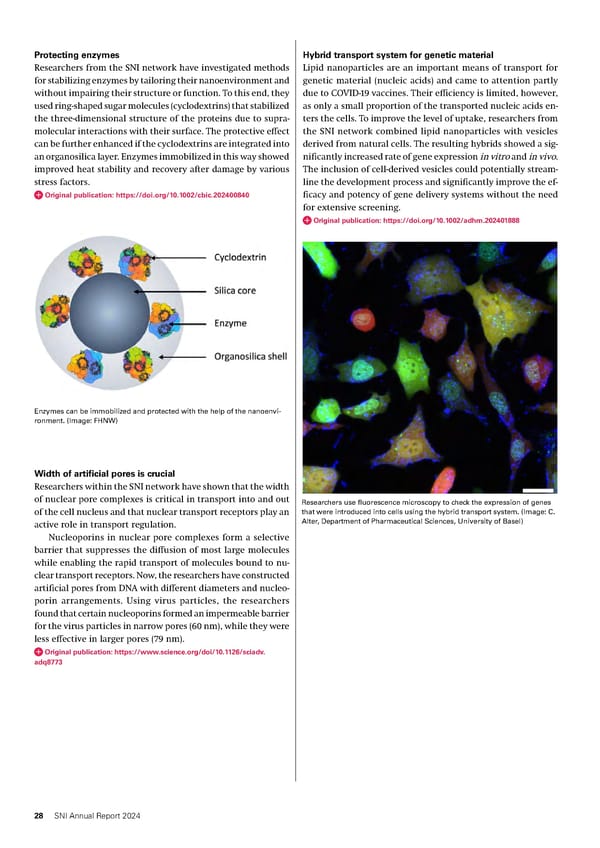Protecting enzymes Hybrid transport system for genetic material Researchers from the SNI network have investigated methods Lipid nanoparticles are an important means of transport for for stabilizing enzymes by tailoring their nanoenvironment and genetic material (nucleic acids) and came to attention partly without impairing their structure or function. To this end, they due to COVID-19 vaccines. Their efÏciency is limited, however, used ring-shaped sugar molecules (cyclodextrins) that stabilized as only a small proportion of the transported nucleic acids en- the three-dimensional structure of the proteins due to supra- ters the cells. To improve the level of uptake, researchers from molecular interactions with their surface. The protective effect the SNI network combined lipid nanoparticles with vesicles can be further enhanced if the cyclodextrins are integrated into derived from natural cells. The resulting hybrids showed a sig- an organosilica layer. Enzymes immobilized in this way showed nificantly increased rate of gene expression in vitro and in vivo. improved heat stability and recovery after damage by various The inclusion of cell-derived vesicles could potentially stream- stress factors. line the development process and significantly improve the ef- Original publication: https://doi.org/10.1002/cbic.202400840 ficacy and potency of gene delivery systems without the need for extensive screening. Original publication: https://doi.org/10.1002/adhm.202401888 Enzymes can be immobilized and protected with the help of the nanoenvi- ronment. (Image: FHNW) Width of artificial pores is crucial Researchers within the SNI network have shown that the width of nuclear pore complexes is critical in transport into and out Researchers use fluorescence microscopy to check the expression of genes of the cell nucleus and that nuclear transport receptors play an that were introduced into cells using the hybrid transport system. (Image: C. active role in transport regulation. Alter, Department of Pharmaceutical Sciences, University of Basel) Nucleoporins in nuclear pore complexes form a selective barrier that suppresses the diffusion of most large molecules while enabling the rapid transport of molecules bound to nu- clear transport receptors. Now, the researchers have constructed artificial pores from DNA with different diameters and nucleo- porin arrangements. Using virus particles, the researchers found that certain nucleoporins formed an impermeable barrier for the virus particles in narrow pores (60 nm), while they were less effective in larger pores (79 nm). Original publication: https://www.science.org/doi/10.1126/sciadv. adq8773 28 SNI Annual Report 2024
 Annual Report 2024 - Swiss Nanoscience Institute Page 27 Page 29
Annual Report 2024 - Swiss Nanoscience Institute Page 27 Page 29